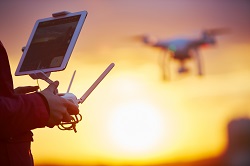Imagine and create your own drone, fit for purpose
‘To our knowledge, this the first system that allows non-experts to design and build their own custom drone,’ PhD student Tao Du told Digital Trends in early December. ‘The interface allows you to enter your specific needs for things like payload, cost, and battery usage, and the system then creates a novel size, shape and structure for the drone that ensures that it is functional and fabricable.’ As the whole process is automated, users can trust the system to consider the consequences of each decision and to adapt the drone’s components accordingly. More rotors to ensure a bigger carrying capacity could for instance result in tendency for the drone to tip, but the system will find solutions to avoid this and, in the end of the process, the user can always rest assured that the drone will be able to properly take-off, hover and land. To make this possible, the team had to decrease the number of variables a designer needs to consider when creating a drone. This was done by establishing a baseline of optimisation assumptions in order to let users skip the most technical steps in the process to focus on their project needs. This new system is a true revolution for the drone market, as users formerly had two choices only: Use off-the-shelf products that might not have all the features and capabilities they would need, or hire a drone company – an option often resulting in a long, tedious back-and-forth custom design process based on trial-and-error. The team already has potential client profiles in mind. ‘Companies like Amazon and Google that are developing delivery drones might be interested in a system like this that lets you customise drones for different purposes,’ Du said. ‘For example, if you want a drone to be able to carry unusually shaped objects like a long, thin antennae, you might need it to be asymmetric or to have other unconventional properties.’ An EU-funded project named SOMA, an acronym standing for ‘Soft Manipulation’, helped make these customisable drones a reality. The EUR 6 million-worth project (due to end in April 2019) is developing soft hand technologies that would enable robust grasping and manipulation of objects in dynamic, open, and highly variable environments; and the perspective of drones featuring such soft-handling capabilities could certainly attract customers across a wide range of sectors. For more information, please see: project website
Countries
Germany



